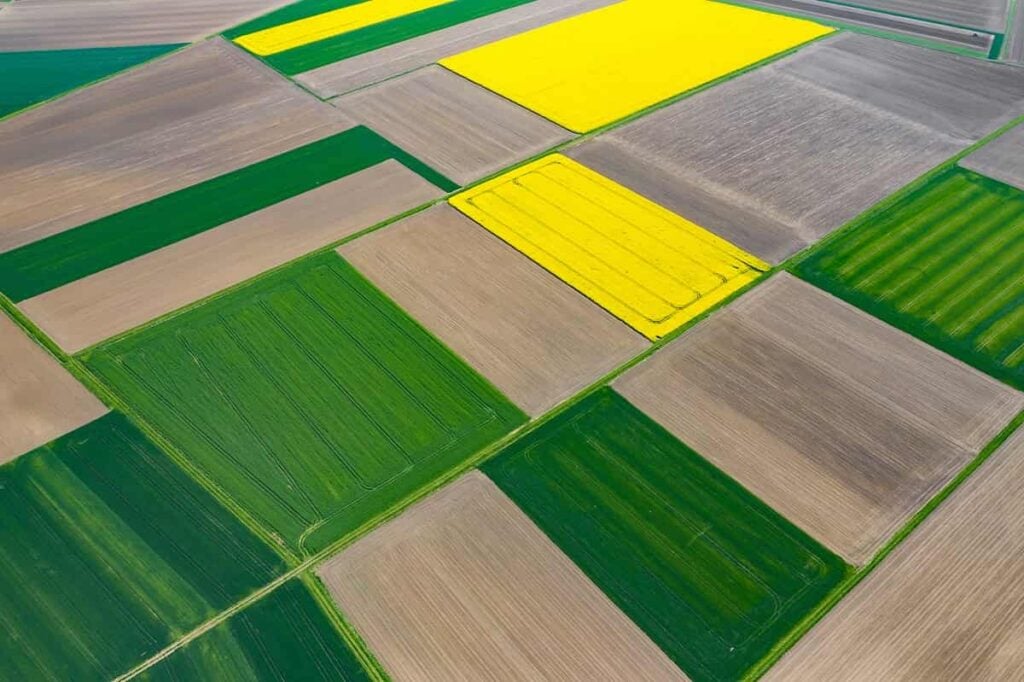Tracking Cell Phone Locations with Geospatial Data
Table of contents
When you work in sales, one of the things you’ll learn is how to handle objections. While we simply see objections as legitimate reasons for why we may not want to buy a product, the salesperson sees objections as hurdles they need to get through before your John Hancock inevitably adorns the contract. Some objections are commonplace, like cost, and some objections may arise based on what’s happening in the media. For example, just take a look at the article published last week by Digiday called Confessions of a location data exec: ‘It’s a Ponzi scheme.’ Now, imagine if you’re the poor sap who has to go face an objection like “I just read this article and think your whole product offering is a scam.” We’ve been writing a lot about alternative data lately, so we decided to take a closer look at location data, in particular, how it related to tracking cell phone locations.
What is Location Data?
Well, at least one person thinks that location data is just a big Ponzi scheme, but let’s start by first defining “location data” or “geospatial data” as it’s often called. Broadly speaking, we’re talking about data that has an explicit geographic positioning component to it. A simple example might be the geographic coordinates of all gas stations in America. You could then apply that data set to a map with roads and distances, overlay the map with current gas prices, then use the combined data sets to determine how you might solve the “traveling salesman” problem of having your truck drivers only fuel up at the cheapest locations without spending extra fuel to get there. (Let’s not confuse geospatial data with “geospatial intelligence” which refers to how we can derive insights from satellite imagery.)
One good example we like to give that illustrates the power of geospatial data is the work SafeGraph did around election time in ‘Murica. Based on looking at cell phone locations, they were able to see who went to the Women’s March and who attended President Trump’s inauguration. Why does that matter? Because since the events were held at the same time, you could make some assumptions about a person’s political leanings based on which event they attended and then use that to create little marketing echo chambers. While all this data was anonymized, some of the insights they learned were fascinating. They could tell what states people were coming from, or even which restaurants they frequented.

What they also found was an overlap of about 2% between the two events which means some people attended both. What that probably represented, was the cases where the husband attended the Women’s March for about 20 minutes to show support for his wife, then chucked the pink pussy hat in the trash and donned a red baseball cap for the inauguration. Love, it has no boundaries.
Real-time Location Data
Speaking of love, did you see that article published by Motherboard last month titled “I Gave a Bounty Hunter $300. Then He Located Our Phone?” The article made philandering spouses everywhere quake in their boots when it claimed that:
T-Mobile, Sprint, and AT&T are selling access to their customers’ location data, and that data is ending up in the hands of bounty hunters and others not authorized to possess it, letting them track most phones in the country.
Apparently, you can pay firms to track someone’s cell phone location because that information is being sold by the major carriers. Anyone familiar with hacking would know that there are a lot of black market service offerings out there. The ability to track that supercomputer you carry around everywhere – and the 2,700 apps that it contains – is hardly an accomplishment worth bragging about. While this might be called “real-time location data,” the only use case for this digital detective service offering is trying to figure out who your future ex-wife is sleeping with. We’re more interested in “real-time location data” that can be used as alternative data input to generate alpha or insights that could lead to alpha.
Location Data as Alternative Data
We’ve already talked about how alternative data is being used by commodity traders to forecast the price of metals or by portfolio managers to monitor sentiment. In both cases, we learned that in order to test any trading strategy out – they call this “backtesting” – you’ll need historical data. That means that we need real-time location data that is composed of snapshots taken at various points in time and with specific parameters. We could then start to use such data for trading strategy. The only problem is, how can we trust the data?
We started out talking about an article by Digiday that implied location data is just a big Ponzi scheme, and in that article, they made a pretty good point as follows:
No one has stopped to think about where that data has come from and why a publisher would choose to sell it all to a vendor who is going to build a business on top of their data.
In the world of financial data, integrity is critical. It’s partly a function of regulatory requirements and partly a function of the quant who has some brilliant strategy and doesn’t want it sullied with dirty data. So, where can we get quality geospatial data that is derived from tracking cell phone locations that we might use for a trading strategy or to glean insights for a portfolio of stocks? How about letting someone else vet the data and qualify it for us. Remember how we talked about Bloomberg terminals? Well, now you can access alternative data on Bloomberg terminals which includes location data from this next company.
Thasos Group – Real-time Location Data
Founded in 2011, Thasos Group hails from what the Americans call the greatest city in the world – New Yawk – and what New Yawkers think is the greatest location in the world – Manhattan. The company has taken in an undisclosed amount of funding to develop their real-time location data product which was forged over a year inside a New York-based hedge fund with over $10 billion in Assets Under Management (AUM). The data is taken from hundreds of millions of mobile phones around the world, and consists of “volunteered mobile phone location data that has been anonymized, aggregated and thoroughly vetted to ensure compliance with the highest legal, quality and ethical standards.”

When it comes to data verification, Thasos Group uses something called “ground truth.” This refers to “trusted observations reported by third-parties of customer visits, hotel occupants, airline passengers, hospital inpatients, football game attendees, city populations, and many other key performance indicators at specific times and places.” These sanity checks not only help instill confidence in the data, but can actually be fed to the machine learning algorithms as additional data sources.
Thasos talks about the strict regulatory requirements that data feeds need to be subjected to in the world of finance, and their platform passes with flying colors since it was built within the industry it is being used in. Since the data is so clean and accurate, they’re able to do some really cool stuff with it. For example, they can go to a business center and then build geofences around each building so that everyone contained within each building can be assumed to be an employee of the company. (A big hint is when the person goes there five times a week and spends roughly eight hours a day in the building.) Here’s what that picture might look like along with the associated stock tickers:

They’re actually able to look at a hotel and distinguish between conference participants, people staying at the hotel, and people working at the hotel. As you can imagine, there are dozens of use cases that could be applied to a technology platform like this one. An obvious use case is retail, and the Thasos MallStreams product provides customer foot traffic, demographic, and loyalty information on properties owned or operated by the 30 largest publicly traded Retail Estate Investment Trusts (REITs). You can even monitor employee productivity.
Thasos built a geofence around Tesla’s 370-acre production facility in Fremont, California which isolated the smartphone location signals that emanated from within. When Elon Musk said they would work “around the clock” to increase Model 3 production, Thasos was able to confirm that. From June to October, the overnight shift swelled 30%. Model 3 production nearly doubled in just three months. It’s all detailed in an article by the Wall Street Journal which presented the below charts.

Conclusion
On the Thasos Group website, the company has made available a wealth of use cases that show how tracking cell phone locations can provide useful geospatial data that can be turned into insightful information. While there are probably dozens of firms out there that will offer to sell you location data, the quality of the data is what’s important. That’s because the best machine learning algorithms will always be the ones that munch on the best data. And if that data happens to be real-time location data, then you couldn’t go wrong choosing the largest repository of high-quality location data after Google and Apple – Thasos Group.
Sign up to our newsletter to get more of our great research delivered straight to your inbox!
Nanalyze Weekly includes useful insights written by our team of underpaid MBAs, research on new disruptive technology stocks flying under the radar, and summaries of our recent research. Always 100% free.















Who can I contact to get me info on cell phones at a particular place at a certain time?
That’s the golden goose, innit. Hard to say as we’re not in that business.
I have the same question. Glad to find the answer here before I could ask. Continuing the golden goose search.
Going to be a tough search with all the privacy laws being enacted.
Generally you can get anonymized data. In other words you can determine what cell phones were at
a certain location at a certain time, but not the cell phone owner’s name. (At least that is my understanding).
Also, some businesses with cell phone geo-data limit who can buy such data to other businesses.
Correct, thank you for pointing that out Jocelyn!
The building that my business is in was damaged late last Monday night by a hit and run driver. I know the exact location and time because it was caught on a Ring doorbell. I am sure the person driving the car had a cellphone. Does anyone know where to go to buy the geotracking information that would help me find the the hit and run driver? Thank you for any help you can give me.
That sort of information is something law enforcement would need to obtain. It’s best to let them track down the person who damaged your business. CCTV is also quite useful.
Thank for your fast reply and you are right. Leave it to the pros. It’s just that all my customers that are lawyers say nobody was killed so you will be low priority. We are going to all our neighbors and getting any security camera footage we can get a hold of. Thanks again for your advice.
No problem Ernie, hope you get it sorted!
can you give me location of a number like a year ago
We cannot unfortunately. We’re just a research firm.